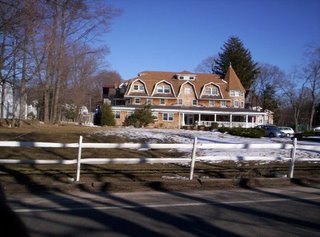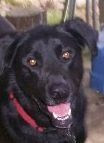
This was a hotel back in the early part of the last century when this town and lake were a tourist attraction . after the tourists went away it became a flop house kind of place . welfare etc . Loads of problems . Cops always there . A killing or two . on and on . 10 years ago it became a drug rehab for young kids . Was completely restored and has been that ever since . I see it daily too . The 4 pictures I just posted are places I see everyday when i go up to the lake with spark . I took the pictures from the car so they are nothing great but gives a small idea of what my town is like . ak
 This was a hotel back in the early part of the last century when this town and lake were a tourist attraction . after the tourists went away it became a flop house kind of place . welfare etc . Loads of problems . Cops always there . A killing or two . on and on . 10 years ago it became a drug rehab for young kids . Was completely restored and has been that ever since . I see it daily too . The 4 pictures I just posted are places I see everyday when i go up to the lake with spark . I took the pictures from the car so they are nothing great but gives a small idea of what my town is like . ak
This was a hotel back in the early part of the last century when this town and lake were a tourist attraction . after the tourists went away it became a flop house kind of place . welfare etc . Loads of problems . Cops always there . A killing or two . on and on . 10 years ago it became a drug rehab for young kids . Was completely restored and has been that ever since . I see it daily too . The 4 pictures I just posted are places I see everyday when i go up to the lake with spark . I took the pictures from the car so they are nothing great but gives a small idea of what my town is like . ak


3 Comments:
I bet this was cool in its heyday
Turning Points: The Smithtown side of the lake was settled by the 1740s, but it was not until the late 1890s that the area gained widespread public attention. That's when boarding houses and hotels were erected to accommodate a growing number of tourists drawn by claims that the lake's waters had special healing powers. By the 1920s, beach pavilions had sprung up. The Long Island Rail Road, which was completed to nearby Lakeland in 1842 (the depot was moved to Ronkonkoma in 1883), helped transform what had been a sleepy farming hamlet.
Claim to Fame: From 1908 to 1910, auto races on William K. Vanderbilt II's 48-mile Long Island Motor Parkway drew international attention. The two-lane concrete speedway stretched from Queens to Vanderbilt's Petit Trianon Hotel on the Islip side of the lake. The hotel was fashioned after an 18th-Century building at the Palace of Versailles in France. It was the site of swank parties enjoyed by Long Island's elite after their drive through the countryside.
And Then There Was Maude: Many theatrical people were attracted by the beauty of the lake. One of the most prominent was Broadway actress Maude Adams, famous for her portrayal of Peter Pan during the Victorian era. In 1898 she bought a farm called Sandy Garth and additional property totaling 700 acres which later became known as The Cenacle, one of the Island's most prominent farms. Sachem High School and Samoset Junior High School were built on part of the land, which was sold to the school district after her death in 1953.
Burning Crosses: The Ku Klux Klan held meetings in Lake Ronkonkoma in the 1920s. Local Klan members focused more on Catholics and Jews than blacks, and burned crosses on the lawns of enemies. The Klan died out by the mid-1930s in that area.
Of course it was my ancestors who ran the Klan . This is why I was shocked as a college freshman in Alabama to have my Klan application ignored. Granted , I applied to be a Grand Wizard right from the get go but jesus , family ties should have some pull .
So I applied to become a Rosocurian and damn if they didn't ignore me too . I became a hippie at that point . allan
Post a Comment
<< Home